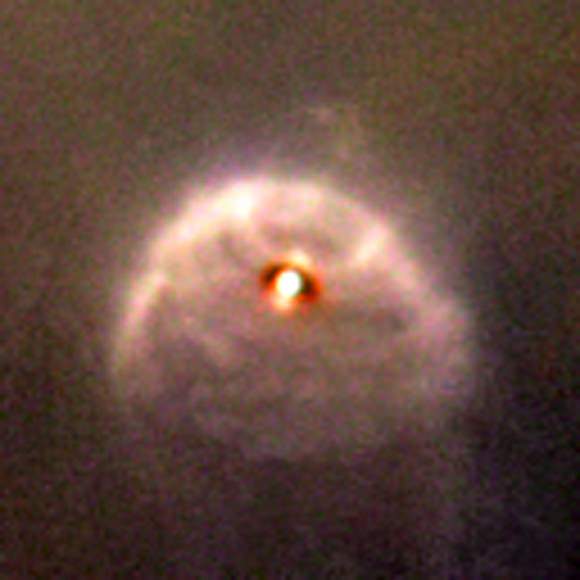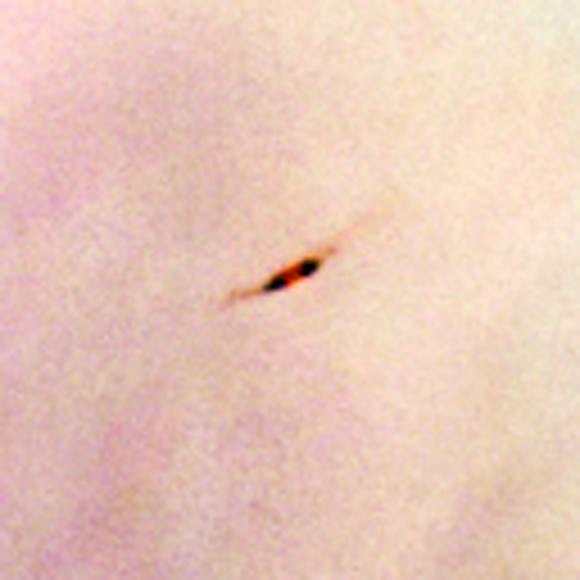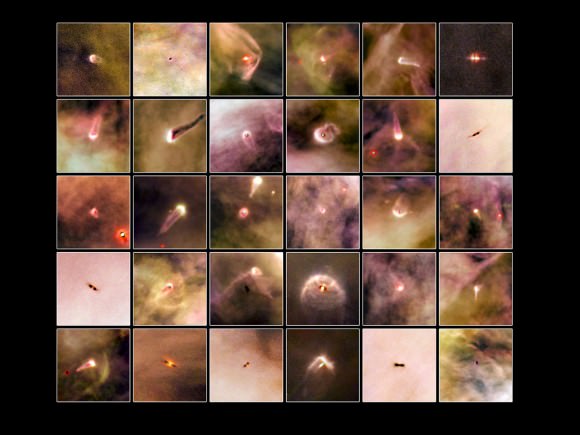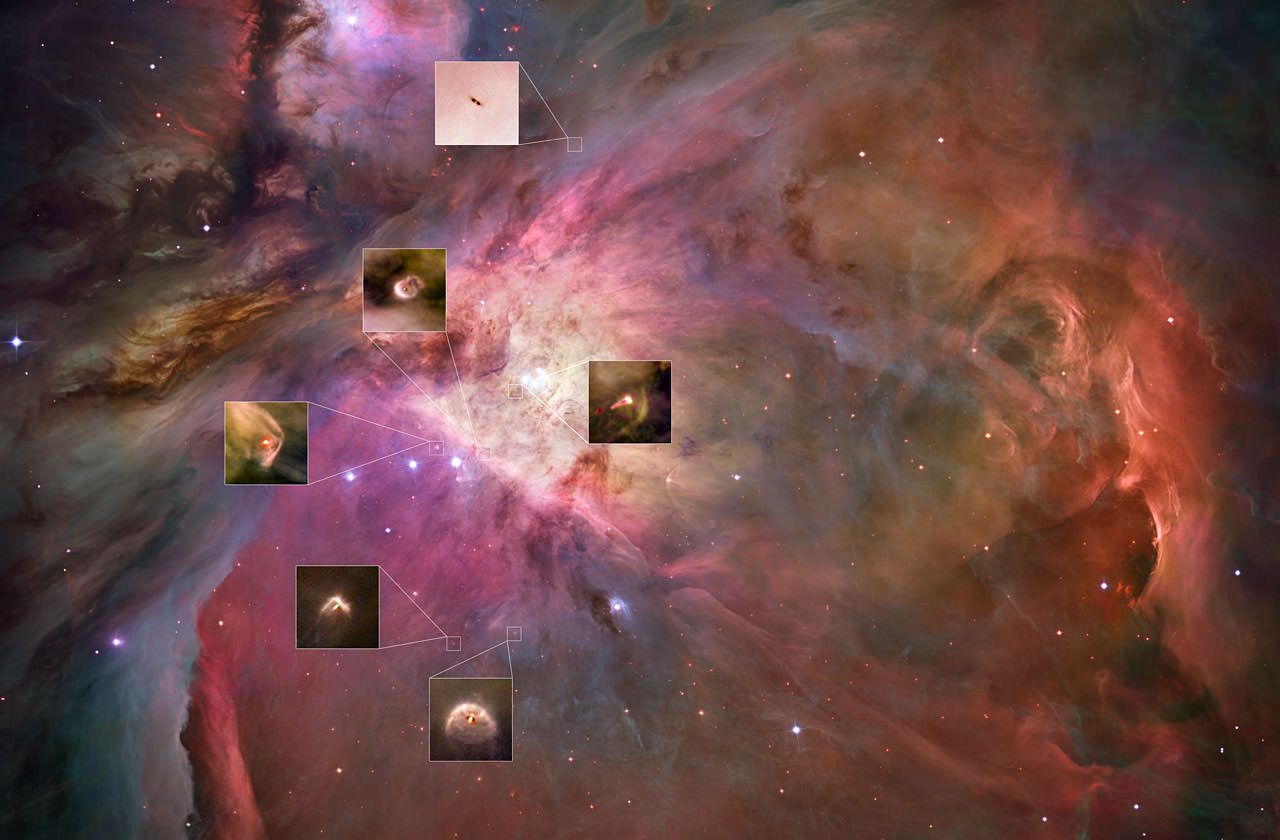Looking deep inside the Orion Nebula, the Hubble Space Telescope has captured a stunning collection of protoplanetary disks – or proplyds – which are embryonic solar systems in the making. Using Hubble’s Advanced Camera for Surveys (ACS), researchers have discovered 42 protoplanetary blobs, which are being illuminated by a bright star cluster. These disks, which sometimes appear like boomerangs, arrows, or space jellyfish, surround baby stars and are shedding light on the mechanism behind planet formation.

As newborn stars emerge from the nebula’s mixture of gas and dust, proplyds form around them. The center of the spinning disc heats up and becomes a new star, but remnants around the outskirts of the disc attract other bits of dust and clump together. This is the beginning of a solar system.
But not all proplyds face a bright and happy future, even in these beautiful images.
Bright star that illuminates some of the proplyds is both a blessing and a curse. The disks that lie close to the brightest star in the cluster (Theta 1 Orionis C) are being zapped by the star’s powerful emissions. The radiation that lights them up and makes them visible also threatens their very existence. As the disk material begins to heat, it is very likely to dissipate and dissolve, destroying the potential for planets to form. Some of these proplyds will be torn apart; however others will survive and perhaps evolve into planetary systems.

Discs that are farther away do not receive enough energetic radiation from the star to heat up the gas and so they can only be detected as dark silhouettes against the background of the bright nebula, as the dust that surrounds these discs absorbs background visible light. By studying these silhouetted discs, astronomers are better able to characterize the properties of the dust grains that are thought to bind together and possibly form planets like our own.

The brighter discs are indicated by a glowing cusp in the excited material and facing the bright star, but which we see at a random orientation within the nebula, so some appear edge on, and others face on, for instance. Other interesting features enhance the look of these captivating objects, such as emerging jets of matter and shock waves.
It is rare to see proplyds in visible light, but the astronomers were able to use Hubble for this ambitious survey of the familiar and photogenic Orion Nebula.
Source: ESA

